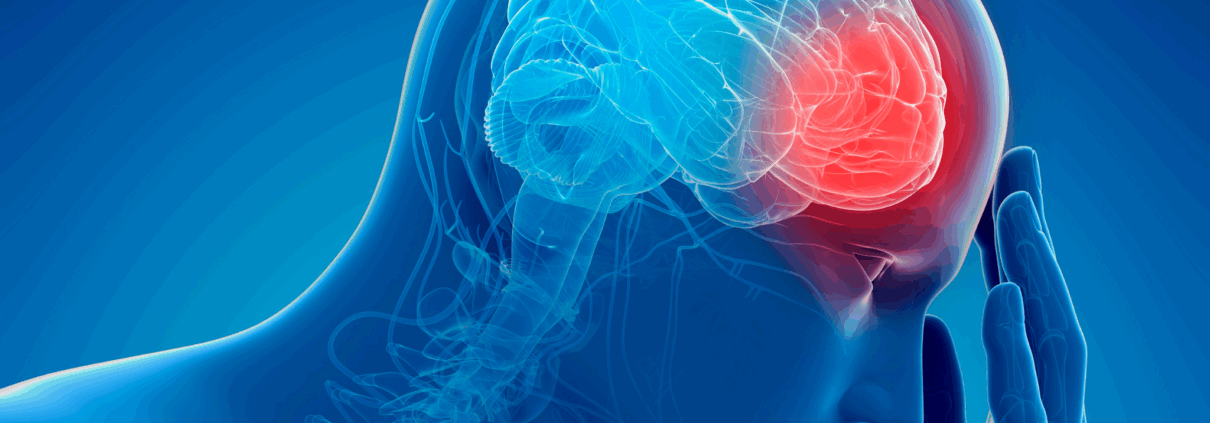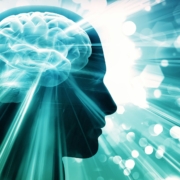Concussion Research Aims to Improve Diagnosis and Treatment
Concussions aren’t new—they’re just being diagnosed more. In the 1990s, the medical community believed there were fewer than 300,000 sports-related concussions each year. Now, there are almost 4 million reported concussions each year related to sports alone.
This number doesn’t take into account the many more concussions from slips on the ice, car crashes and other injuries. Improved awareness, quicker diagnosis and better treatments are helping recovery and prevention of serious complications. But many of these mild traumatic brain injuries (TBIs) still go unreported, undiagnosed or misdiagnosed, possibly resulting in premature return to activity.
Recent studies show that up to 29% of adults have said that they had at least one concussion, but over half were not seen by a health care professional for their most recent injury.
Children and teenagers have the highest risk of sustaining a concussion. The National Health Interview Survey from 2020 found that almost 7% of children 17 and younger had symptoms of a concussion or brain injury at least once in their young life.
Research has also shown that there is more than one way to get a concussion. “It wouldn’t even have to be a blow to the head,” said Peter Arnett, PhD, director of the Neuropsychology of Sports Concussion and Multiple Sclerosis Programs at Penn State University and past president of the National Academy of Neuropsychology.
“The biomechanics could also move the head in a way that affects the brain and could result in a concussion,” Dr. Arnett explained. This could happen if you’re moving and you stop suddenly, like in a motor vehicle accident, or if you fall and land on another part of your body, but your head jerks hard anyway. The sudden movement causes strain or injury to the nerve cells and blood vessels around the brain, causing a concussion.
Concussions Then Vs. Now
Research into brain injuries in the past tended to focus on moderate-to-severe TBIs. “The research within mild traumatic brain injury was slower to catch up because [concussions were] thought to be mild and not have significant longstanding impact on individuals,” said Amaal J. Starling, MD, associate professor of neurology at the Mayo Clinic in Scottsdale, Arizona. “Once neurologists and other individuals who were interested in understanding what the functional abnormalities and microstructural abnormalities were in concussion or mild traumatic brain injury, it really elevated the field.”
To better understand concussion, improve diagnosis and care, and manage long-term outcomes, there are hundreds of concussion studies going on worldwide. Some are large, such as the NCAA-DoD Concussion Assessment, Research, and Education (CARE) Consortium, which marked its 10-year anniversary last year, and the TRANSCENDENT Concussion Research Program, which began in 2023. But there are many small independent studies as well.
One of the principal investigators of the CARE consortium is neuropsychologist Michael McCrea, PhD, vice chair of neurosurgery and director of the Brain Injury Research Program at the Medical College of Wisconsin. The CARE project enrolled about 55,000 athletes and U.S. military service academy cadets and midshipmen. “We have extensive data on about 6,000 acute injuries, and we now have a better understanding of the typical recovery time and factors that affect recovery and outcome so we can intervene on those factors early on to promote a healthier and more rapid recovery,” Dr. McCrea said.
Advances in Concussion Diagnosis
To reduce the risk of long-term complications, early detection and diagnosis of concussion is vital. Concussion research has progressed very quickly in this area.
“If you think about it, there aren’t many areas in science and medicine that made this kind of progress in such a short period of time,” Dr. McCrea said. “We’ve gone from literally, ‘how many fingers am I holding up’ or ‘what’s your name’ as the assessment tool, to the development of standardized symptom assessments, cognitive tests, balance tests and other functional, standardized clinical measures that can be used in emergency departments, in sporting environments, and in the military, and have been disseminated worldwide.”
Working directly with patients who are recovering from concussions, Dr. Starling’s research focuses on early identification of head injuries—outside of elite sports. “What I’ve really been interested in is how do we identify a sideline protocol and a sideline tool that is easy to access, easy to administer, can be administered by non-medical personnel, and is accurate and reliable,” she said.
Dr. Starling has been working a lot with the King-Devick Test, which tests eye movements, attention and language, using cards or a tablet. Originally, the test was used to help assess dyslexia, but researchers like Dr. Starling have found that its sensitivity made it useful for head trauma assessment.
Different types of diagnostic tests and approaches may be needed for elite athletes, though. According to Dr. Arnett, there are a few reasons why testing using a baseline comparison model can be problematic in assessing concussions in this group. They range from the athletes becoming familiar with the tests because of how frequently they do the tests—so they know how best to respond—to extra motivation to pass the tests if they’ve had a head injury (not present at baseline) because they want to get back on the field.
Proteins in the blood can tell physicians if there’s been damage to the brain. These are called biomarkers, which are substances that indicate a specific thing has happened, in this case, a concussion.
“There’s now clearance [by the U.S. Food and Drug Administration] for two of these biomarkers for use in emergency departments,” Dr. McCrea said. “They’re highly effective in identifying the risk of someone having a brain bleed, even when they come in with what appears to be a mild traumatic brain injury.”
Dr. McCrea also discussed the new point-of-care option, a small device that can be used in the emergency room to check for those two biomarkers. “You can get a result in about seven minutes.”
Imaging tests have changed the understanding of concussions too. Dr. Starling pointed out that in the past, a concussion was thought of as only abnormal brain function, but advanced imaging has shown that there are disruptions in the microstructures of the brain. This knowledge could lead to future treatments.
Other tests help clinicians assess patients in different phases of concussion recovery. For example, the Concussion Recognition Tool 6 (CRT6), which can be used by non-medically trained people, and the Sport Concussion Assessment Tool 6 (SCAT6), for health professionals, are best used within the first 72 hours after injury.
But other tools, like the Sport Concussion Office Assessment Tool (SCOAT6) and its pediatric equivalent are for use only in the medical office setting 72 hours after the injury and weekly after that for follow-up evaluations. Biomarker testing can also be done at the time of injury and later to monitor progress.
Rest or Return?
Aside from research on diagnosis, much as been done on the best way to help people recover and return to daily life. “That’s an area of recent advances and a huge paradigm shift [in concussion management],” Dr. Starling said. “Whereas before it ‘was rest until you recover,’ we’ve now recognized that if you rest until you recover, you may have a prolonged recovery, you may have a higher symptom burden, and you may have an incomplete recovery.”
While every patient is different, the general recommendation now is after 12 to 24 hours of rest, to start returning slowly to both mental and non-contact physical activity.
Screen time recommendations haven’t changed though. “There is evidence that just avoiding screen time [within the first 48 hours after injury] is going to result in a better recovery during that acute period after the concussion,” Dr. Arnett said. “Avoiding screen time initially is a good thing.”
The Mental Health Connection
What might be surprising to some people is the connection between concussions and mental health—in both recovery and in risk in the first place. Dr. Arnett said researchers have found that people who have sustained concussions show more depression, anxiety and cognitive problems afterward.
“If they’re not treated, this could prolong symptoms after a concussion and make it more likely that a person would show a prolonged recovery, where you’re looking beyond a month after the person’s concussion,” he said.
The mental health connection can even be noticed before a concussion occurs. One of Dr. Arnett’s students, Garrett A. Thomas, published a paper in 2024 in the Orthopaedic Journal of Sports Medicine that looked at NCAA Division 1 athletes who experienced depression and/or anxiety and concussion rates.
“People who had comorbid depression and anxiety at baseline were twice as likely to go on to have a concussion compared with people who didn’t have any of those mental health problems at baseline,” Dr. Arnett explained.
It was the combination of depression and anxiety that increased the risk. The researchers found no significant risk for athletes who had only depression or only anxiety. It’s unclear why that is—one theory is that athletes with depression and anxiety may be more distracted and have slower reactions; another is that they may report more symptoms that lead to concussion diagnosis.
Whatever the cause, the research team said it’s important for health care providers to be aware of this when evaluating or treating for concussion.
Aside from mental health, sleep issues may also increase concussion risk. Another of Dr. Arnett’s students, Kaitlin E. Riegler, published a study in 2023 in the Journal of Athletic Training that showed athletes who had poor sleep at baseline were twice as likely to go on to get a concussion than athletes without sleep problems.
The research into mental health and sleep as risk factors for concussion is currently limited to student athletes, but future research could examine whether these findings would extend to the general public.
Concussions are no longer looked at as just a bump on the head, but as brain injuries that can cause significant complications if recovery isn’t complete. This greater awareness—along with research breakthroughs and advanced diagnostics—is helping transform how the medical community and the public approach both prevention and recovery.







